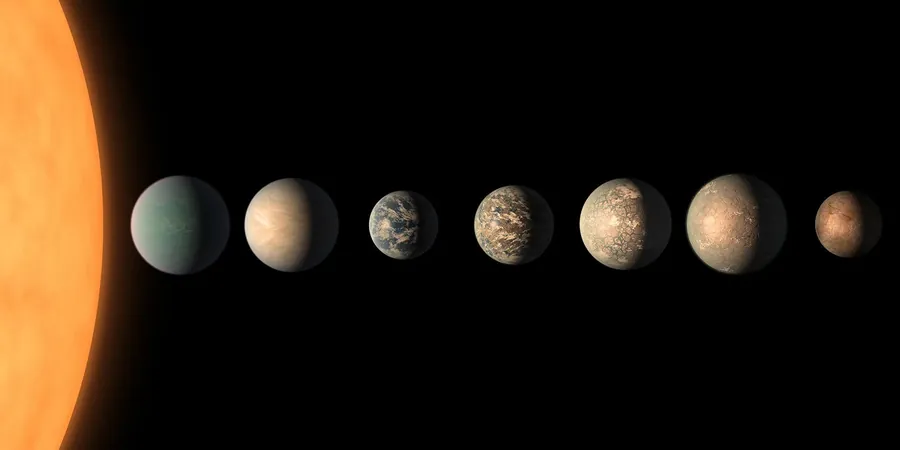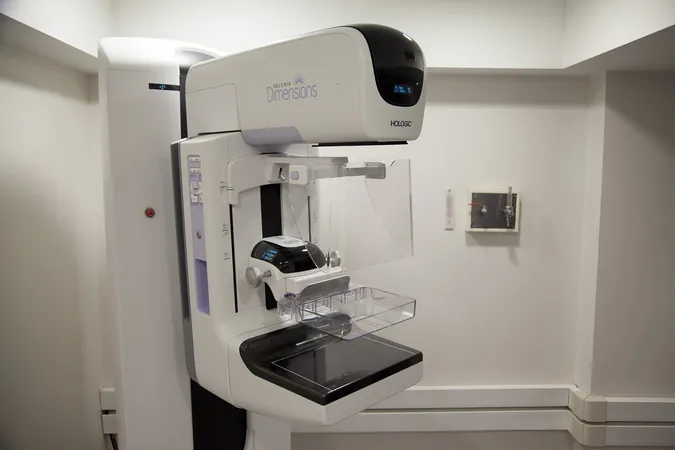
Could Rocky Exoplanets Orbiting Small Stars Hide Life-Sustaining Atmospheres?
2024-10-23
Author: Wei Ling
Introduction
Since its groundbreaking launch in late 2021, NASA's James Webb Space Telescope (JWST) has opened new avenues of exploration in the quest for extraterrestrial life. Among the prime candidates for this search are rocky exoplanets orbiting M-dwarfs—low-mass stars that are abundant throughout our universe. Located just 40 light-years away, the TRAPPIST-1 system has become a focal point for researchers intrigued by the possibilities of life beyond our solar system.
Historical Concerns
Historically, concerns regarding the habitability of planets circling TRAPPIST-1 centered on the intense ultraviolet (UV) radiation emitted by its star, which could strip away surface water and desiccate these worlds. This early research suggested that the remaining hydrogen could react with other elements, creating a hostile chemical environment detrimental to potential life forms.
New Optimistic Findings
However, a new study led by the University of Washington and published in Nature Communications paints a more optimistic picture. The research posits that certain rocky planets around M-dwarfs can develop stable atmospheres over time, crucial for supporting life.
According to lead author Joshua Krissansen-Totton, an assistant professor of Earth and space sciences at the University of Washington, 'Can rocky planets orbiting M-dwarf stars maintain atmospheres that could support life?' remains one of the most compelling questions of exoplanet astronomy. Their findings indicate that some of these rocky worlds indeed possess atmospheres, greatly increasing the likelihood that these common planetary systems could harbor life.
JWST Observations
The JWST has the capability to examine selected candidates within this category, but initial data suggest that the closest, hottest rocky planets to TRAPPIST-1 are missing thick atmospheres. The telescope has yet to accurately assess those within the 'Goldilocks zone'—the optimal distance from the star where conditions could allow for liquid water and, consequently, life.
Planetary Evolution
The recent study traced the evolutionary journey of a rocky planet from its initial molten state to a solid surface over hundreds of millions of years. It found that while lighter gases like hydrogen initially escaped into space, planets situated in more moderate zones experienced a reaction that produced water and heavier gases, forming a stable atmosphere.
Implications for Habitability
Moreover, the research highlights that on Goldilocks zone planets, water precipitating from the atmosphere reduces the likelihood of substantial water loss. Focusing on these promising candidates, Krissansen-Totton emphasizes, 'It’s easier for the JWST to observe hotter planets close to the star. For those, we clearly see they lack a thick atmosphere. However, the more temperate planets might be worth investigating more closely due to their habitability potential.'
Future Research Directions
While the JWST has yet to determine whether the planets farther from TRAPPIST-1 have atmospheres, a discovery of such would open up exciting possibilities for liquid water and habitable climates. With advanced tools like the JWST and upcoming massive ground-based telescopes, researchers expect to scrutinize a limited number of rocky planets within the habitable zones.
Given the intense eagerness surrounding the search for extraterrestrial life, the study underscores the importance of allocating telescope time to pursue the habitability of these intriguing systems with current technologies rather than postponing scientific exploration for next-generation instruments.
Conclusion
This emerging research revives hope in the cosmic search for life, suggesting that our understanding of where to look for extraterrestrial existence might significantly expand in the years to come. Is it possible that our next Earth-like neighbor lies within reach, waiting to reveal its secrets?




 Brasil (PT)
Brasil (PT)
 Canada (EN)
Canada (EN)
 Chile (ES)
Chile (ES)
 España (ES)
España (ES)
 France (FR)
France (FR)
 Hong Kong (EN)
Hong Kong (EN)
 Italia (IT)
Italia (IT)
 日本 (JA)
日本 (JA)
 Magyarország (HU)
Magyarország (HU)
 Norge (NO)
Norge (NO)
 Polska (PL)
Polska (PL)
 Schweiz (DE)
Schweiz (DE)
 Singapore (EN)
Singapore (EN)
 Sverige (SV)
Sverige (SV)
 Suomi (FI)
Suomi (FI)
 Türkiye (TR)
Türkiye (TR)